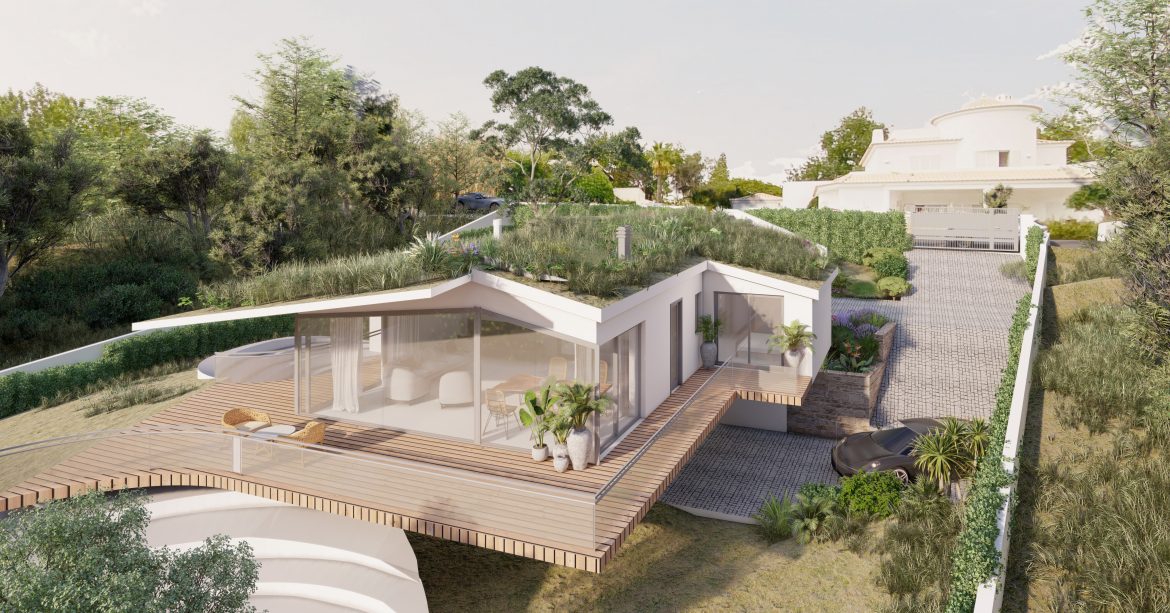“Sustainability is like teenage sex. Everybody says they’re doing it, very few people are actually doing it. Those who are doing it are doing it badly,” Joseph Romm.
We’ll be honest, we couldn’t have said it better ourselves, and whether you’re talking about sustainability/green architecture/eco-design/eco-friendly architecture/arcology or any other name you want to give it, there’s so much false information out there that no wonder no one actually knows what’s going on. So, if you think the following picture sums up green architecture, this article’s for you:

This is what we do, so we’re going to give you the lowdown, to make sure you’re actually getting what you ask for when you invest in your own sustainable build.
Now…
What actually makes a building sustainable?
We’ve said this before, and we’ll say it again. Sustainable means it lasts a long time. Now picture Tokyo, a city of the future populated with skyscrapers and the global focus of new technology. The average lifespan of a building in the city is as little as 26 years.
That. My friends. Is NOT SUSTAINABLE, no matter how many solar panels you stick on it, trees spring out of it or mini wind turbines you set to spinning.
Sustainability is about doing things once and doing them well [can you hear the little voice of capitalism screeching in despair?!]. Using materials that will last, so that the carbon footprint of a build is spread out over decades. Can you imagine the strain on our planet of rebuilding an entire city 3 or 4 times in a single lifetime? Not to mention that the manufacturing of cement is reportedly one of the largest global contributors to carbon dioxide emissions.
So that’s where we’ll start—the very concept of longevity.
Sustainability is a carefully thought-out process that requires design, planning, and precision. Each move is calculated like a game of chess to ensure it’s right. It’s done well, using the fewest resources possible to minimise the build’s impact on the environment.
Fewest resources possible?
Yes, that means locally sourced materials reign supreme, and the more cleanly they’re made, the better, minimising the harmful effects of construction projects on human health and the environment.
Which leads us onto the next question:
Can your average brick or stone house be sustainable?
And though the phoneys out there will tell you otherwise – “raze it to the ground and build the entire thing out of energy supplying/shading/ metre thick insulating glass”, we hear them say – just think about it. Surely working with what you’ve got is going to be more environmentally friendly than starting from scratch? Check out Casa Michel, for example. Now that was a refurbishment for the books.

Next: build smart
And this is where architectural knowledge comes in. But not in the way you might expect.
Have you ever heard of a passive or zero-energy house?
These are self-sustainable houses, producing the energy they use themselves, built so that they have an ultra-low energy usage.
But one secret you won’t hear all that often is that the knowledge we need for these houses has been around for generations. How is it that we have been designing, in our very own Algarve, manage to stay cool in the blazing heat of summer without so much as a fan?
Carefully planned architectural work, of course. Positioning the house so that the full force of the midday sun isn’t penetrating the entire structure, strategic shading, carefully planned out windows. We’re not reinventing the wheel here; we’re harnessing all of that and combining it with high-quality materials to ensure a house is structurally sound and able to function passively from the foundations up. Insulation, double glazing, ventilation systems, energy-efficient lighting and appliances, rainwater harvesting and greywater reuse, water-saving plumbing fixtures, landscaping with native vegetation, renewable energy power sources and carefully thought-out spaces are all features, added to what is, put simply, good architectural design. Take a peek at Villa GK, for example, to see exactly what we’re talking about.
And last, but certainly not least.
What is Natural or Organic architecture?
It’s architecture that encompasses natural, or organic, elements. Think green roofs, green walls, those houses built around a tree and even the new craze: vertical farming (have you seen the massive vegetable patch on top of the Market building in Faro?). Each of these ideas has a conscious awareness of their surroundings.
Everyone knows plants mop up greenhouse gas emissions, so by adding more to urban areas, we’re helping the environment, right? And did you know that urban gardens, woodlands and parks reduce depression? So really these additions win on all kinds of different levels, not least because they’ll make your “green” home really and truly green to look at. Now isn’t that a nice way to round the subject off?
So in short, green architecture is about reducing, reusing and recycling. Sticking it to capitalism and doing our bit to save our planet. The only question we have left is… why aren’t all architects doing all of the above?!
We don’t know, but at CORE we believe if one takes the first step, others will follow.
Are you ready to walk with us?


